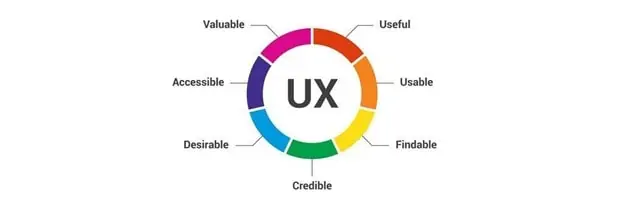Whether your products or digital or physical, user experience is very important. It influences the level of success you have as a business and it enhances the overall value that the user gets from investing in your product.
With that being said though, there’s always room for error and when keeping track of your UX, sometimes mistakes are being made.

According to Bluespace, 88% of users will be less inclined to return to a website because they had a bad user experience, so first impressions certainly count. Here’s why it’s important to keep track of your UX and where you might be going wrong.
The benefits of monitoring your UX
User experience is all about the relationship between people and technology, as so rightly put by Every Interaction. So with that being said, there are many benefits to the customer and your product that come from monitoring just how efficient your UX is. By monitoring your UX through website visitor tracking tools, you will discover any pain points or problems that perhaps weren’t flagged prior to the development of your product.
Sometimes, it’s a case of addressing problems after the product has been launched, when it’s actively being used by your customers. By not paying attention to your user experience, you’re likely going to diminish your product’s value, which will lose you customers and likely affect your company’s reputation too.
Here are a few things you might be doing wrong when it comes to tracking your UX.
1. The balance of aesthetics and functionality
An issue that some products can have when it comes to user experience is that they’re too heavily focused on one thing, whether that be the overall aesthetic of the product or its functionality. It’s all about striking that perfect balance and often enough, that proves difficult.
Aesthetics are an important part of user experience because when we look at the user interface of a platform or a website, for example, it has to be visually appealing. From the creative graphics used to the layout, imagery, and perhaps interactive design elements. But whilst aesthetics are important, it also needs to be functional.
If your users are struggling with certain aesthetic features that aren’t functioning or blocking certain functions, then that’s going to be frustrating. For example, you might have a landing page on your website that has an interactive graphic but the graphic itself is blocking the user from clicking on another page.
Finding that balance is important and that can only be done when you’re monitoring your user’s behaviors and navigation with the product. By grasping that perfect mixture of the two, you’ll see a lot more satisfaction with your customers and their overall experience when using said product.
2. How responsive is the design?
Responsive sites are what any users would like, especially when they’re trying to access the product from their mobile. There are lots of sites out there that have yet to adapt themselves to mobile-friendly options, which is surprising when figures show that 61% of users opt to never return to a website that isn’t mobile-friendly.
Having a responsive design is necessary, regardless of the product. This can often be done by paying attention to user experience and how they interact with the various elements. Are there issues that could be stopping certain features from responding correctly? You’ll only know when you monitor your UX closely.
You could end up losing a big audience by not having a responsive design and this is critical when it comes to your marketing. Even if you’ve looked at how to calculate market size to maximize your marketing budget, it’s rendered useless if your product isn’t responsive in the first place.
It’s important that every user who comes across your product gets the same experience and responsiveness that you aimed to give them when developing it. So if it’s a website with a responsive problem, find the specific issue and fix it. If it’s an app or software, ensure there are bug fixes and updates distributed routinely.
Having a responsive design is one of the most important objectives to achieve and can be the difference between securing a customer and having them look elsewhere.
3. Not providing quality and valuable content
Content is king and has been so for a few years now. For user experience, providing quality and valuable content can help your product perform better and provide value to your users too. For example, if your product is a website, then it’s necessary to follow the relevant content guidelines to help give the best UX.
These include paying attention to quality, posting new blogs to help rank on search engines, and utilizing keywords to help users find them. When it comes to products like software, providing content that the user will benefit from when using the service is essential. It’s also worth coming back to brand voice and keeping consistent in the style and tone you use for all your content.
When it comes to blog content or web pages, there are certain things that perform better than others. Like bullet-point lists, 70% of people look at lists with bullet points according to UxCam. It’s beneficial to cater to what your users enjoy and more importantly, engage with. Otherwise, it can often fall short of being engaged.
Content is important to focus on because it can provide the materials needed for your marketing. There are plenty of marketing tactics to use and having knowledge of what is live marketing, can also be handy for digital products. For many digital products, your customers are likely to be somewhat active online. However, having the right content is needed for your brand’s marketing.
4. Focusing too much on SEO over users
There can often be a lot of focus on SEO and that’s certainly true when online competition nowadays is more fierce than ever before. Everyone is pitching to get on the first page of the search engine and so they’ll use all of the relevant methods that appease Google’s algorithm. From specific keywords to content length, many businesses can forget that it’s important to cater to your users too.
Even though SEO is important, you should be putting the user’s experience first and foremost. A search engine’s most important element after all is the users themselves. So whilst you should consider SEO for any element of your product, whether it’s an online tool or a website, it’s still necessary to pay attention to your target users.
By providing an exceptional user experience, you’ll have a better chance of ranking higher on those page results. Think about what your users are providing when it comes to feedback as this will help you target your SEO in the right way. Whether that’s fixing page load speed to providing more informative content.
The main objective is to provide an experience for your users that is exceptional and that they wouldn’t be able to find elsewhere. Try to maintain a balance between both SEO and UX as they go hand-in-hand with each other’s success.
5. Lack of collaboration between team members
In order to provide the best user experience, a collaboration between the design and development teams needs to be in place. A lack of that collaborative effort is likely to mean that things get missed and that can prove critical to any user experience.
It’s therefore important to still retain communication between developers, designers, marketers, and anyone else in the team in order to correct issues and problems had by users. With a lack of collaboration between team members, even after launching the product, it can end up compromising any marketing strategy you have in place.
Collaboration is an important part of any project and when it comes to digital products especially, security can often be a risk too. In order to provide the best UX possible, using a project management software like Asana, can be helpful in keeping everyone in communication and on the same page.
Try not to let UX slip from focus
There are some obvious signs that your UX team is disconnected from the product. UX for one is part of the roadmap and should be throughout the lifespan of the product you’re providing. This is often lacking though when it shouldn’t be.
UX is also sometimes missing when it comes to customer discovery, i.e questioning your product’s value and the jobs that need doing to secure customers. It’s essential that UX doesn’t slip from the overall focus of your product. Whether it’s at the start of its development or beyond its launch, there are always improvements to be made for the user.
Keep up communications with your users and continue to find solutions to the problems and issues your users face whilst using the product. Concentrate on providing a user experience over SEO and try to provide valuable and informative content.
Author Bio: Natalie Redman
Email – [email protected]
Freelance writer for many clients including Skale, Natalie has two years of copywriting experience. Natalie has a wide range of experience copywriting for web pages for businesses across many industries. She’s also an owner of two blog websites and a Youtube content creator.












0 Comments